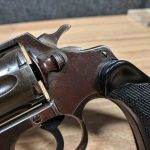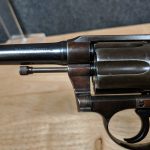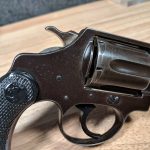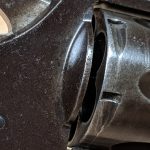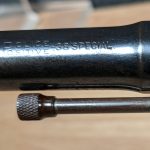Responsible gun owners know that for their firearms to take care of them when needed,…
Your Gun’s Natural Patina is Valuable
The patina or natural worn finish on your firearm may actually be an important part of its value. With older antique firearms, that slightly worn finish that acquires with age, use and exposure is sometimes an essential part of it’s collectibility, history and preservation. It takes years of handling, oiling and age to develop a patina and no two are alike. A well curated patina sometimes happens by accident but most of the time is comes from years of maintenance and care. Not only can it make a firearm aesthetically appealing, but it also provides a protective coating to metal and wood that would otherwise be damaged by corrosion or weathering.
Some of the most well preserved older firearms are those that have a fine patina, acquired through handling, use, and continual oiling. Exposure to the elements (oxygen, humidity, rain, acid rain, carbon dioxide and sulfur-bearing compounds) and chemical reactions also play a roll. Depending on the environment where a gun was used and stored, a patina may mean only a slight discoloration of finish all the way to a changing of the metal or wood surface texture.
Blueing Patina
Blueing is a process in which steel is treated and partially protected against rust; it is named for its blue-black appearance. As metal blueing ages and a firearm is used and handled, it’s ability to repel oxidization (rust) diminishes and worn areas with less protective blueing begin to discolor. When left unprotected (oiled or coated), these areas of thinned blueing can quickly rust. While surface rust is usually easily removed, rust left unattended results in rust pitting which permanently damages a metal finish.
The key to protecting and preserving a firearm’s blueing is maintaining a coating of oil on the metal and avoiding storage in wet or humid places.
Should I Re-Blue or Re-Finish My Gun?
The short answer is no. If it’s your intent to maintain a firearm’s collectibility and value, the answer is usually “no”; don’t re-blue your gun. Firearms with an original finish, even if they have visible wear and discoloration are generally more valuable than those that have been refinished (re-blued or parkerized). A firearm that shows a little wear with it’s original finish is more valuable than one that has been refinished (re-blued).
What about the oils from my hands?
Human skin contains natural oils that keep our skin protected. No matter how often you wash your hands, your hands will have a natural oil on them that can transfer to a firearm’s finish. In certain circumstances these hand and skin oils can blemish a wood’s finish and even stain wood overtime. This isn’t necessarily a bad thing though as hand & skin oil can be a contributor to developing a patina on a firearm. It could even be argued that the oil from your hands help preserve the wood and metal finish. There is an exception; if your gun is a new-in-box and un-used with very little handling it’s not a bad idea to give your gun the “white glove” treatment and wear gloves when handling it. A patina isn’t always desirable. If the gun has seen some use and already has a patina, don’t worry about your hand & skin oils on the gun. It may in fact be aiding in its preservation.
In Summary
A natural worn patina that is consistent with the age of a firearm is aesthetically appealing, aids in preserving a firearm, and generally increases it’s value. Don’t refinish your older antique firearms, they are more valuable with their original finish (even if they are worn). Leave the dust on it, leave the varnish and Brasso in the garage, and stay away from re-blueing. That patina took years to develop – it’s what makes your old firearm valuable and unique.

